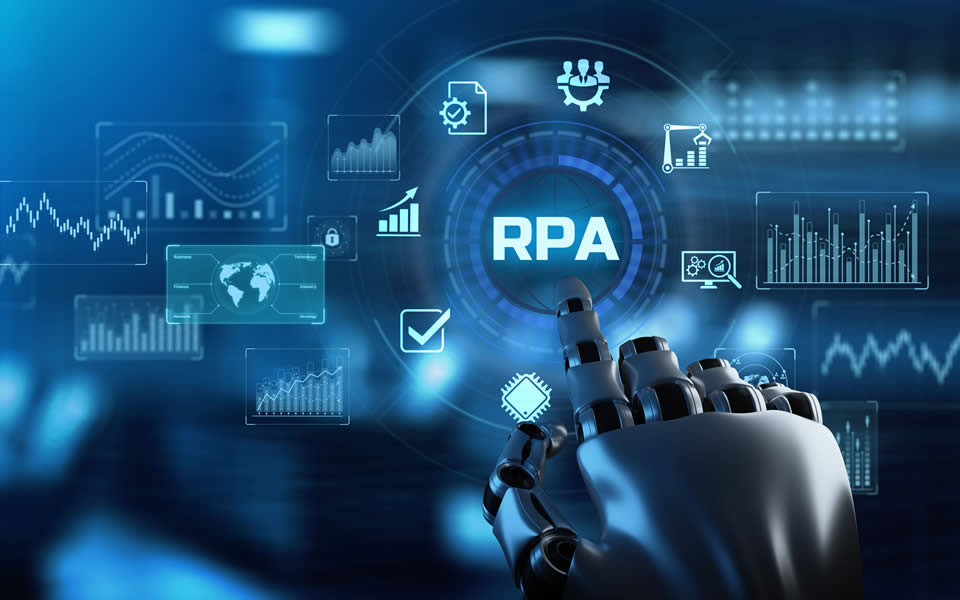Why RPA Remains a Cornerstone in the Age of Intelligent Automation
By Joshua Widener, Manager, Intelligent Automation, Marcum Technology
With all the hype around Artificial Intelligence (AI), Robotic Process Automation (RPA) seems to be taking a back seat in the minds of many—despite the fact that it is still a very relevant and viable solution for automating business tasks.
As organizations move toward digital transformation, RPA remains a fundamental element of Intelligent Automation (IA) strategies, providing an excellent platform for building advanced, intelligent automation systems that can drive significant operational improvements and competitive advantage.
In fact, according to Precedence Research, the global RPA market is expected to reach $54.57 billion by 2032, experiencing an impressive annual growth rate of 28.7%.
Let’s take a deeper dive into the differences between RPA and AI, the foundational role of RPA in the business landscape of today and tomorrow, and the challenges and opportunities that come with bringing these two transformative technologies together.
RPA VS. AI: DEFINING THE ROLES
The rapid proliferation of artificial intelligence has led to some common misconceptions that AI will be replacing RPA, when in reality, the two actually complement one another. In essence, AI excels at complex processing, but it still requires a reliable way to interact with various systems and data sources; which is where RPA can shine.
When used in tandem RPA and AI can provide for more effective automation. For instance, RPA provides the essential “body” for intelligent automation. It handles the rule-based repetitive tasks of data entry, manipulation, and system interaction, freeing AI, the “brain,” to focus on decision-making capabilities and complex problem solving.
By leveraging the combined strengths of RPA and AI together, business leaders can develop and implement intelligent automation solutions that maximize operational efficiency and deliver tangible value.
KEY BENEFITS OF RPA IN IA STRATEGIES
While AI may be getting most of the attention lately, RPA continues to serve as a digital enabler, providing widespread strategic benefits across the organization, including the following.
ACCESSIBILITY & EASE OF IMPLEMENTATION
RPA offers greater accessibility and ease of implementation compared to AI models, as it is designed for straightforward tasks without the complexities of AI. Additionally, the cost of implementing RPA is much lower than that of AI models; as many RPA functionalities are already developed, and don’t require the advanced development that AI models would necessitate.
SPEED
While RPA solutions can be deployed quickly to automate rule-based tasks, AI solutions require more time and expertise to train and validate. Furthermore, AI provides answers without much insight into how the information is produced, while RPA allows for greater visibility and tracking of development and workflow.
QUICK RETURN ON INVESTMENT (ROI)
RPA can produce quick and measurable return on investment by offering plug-and-play automation of mundane tasks, regardless of industry. This can result in immediate cost savings and increased efficiency.
SCALABILITY
RPA’s ease of use allows businesses to start small using simple processes for proof of concept and then scale up to more complex processes and workflows. It’s up to the business to decide how far or how quickly they want to scale their automation strategy.
ENHANCED PRODUCTIVITY
Implementing RPA in organizations frees up skilled employees to focus on more mission-critical tasks, such as analytical thinking rather than mundane data entry work. This leads to enhanced productivity and better business outcomes.
According to McKinsey, boosting productivity by just 50% could add up to $10 trillion in output to the U.S. economy alone by the year 2030.
IMPROVED ACCURACY & COMPLIANCE
RPA can improve accuracy and compliance in an intelligent automation strategy by consistently performing tasks the same way every time, eliminating costly human error, and ensuring that processes are being carried out as intended.
Furthermore, certain checks and balances are built into RPA technology to ensure compliance. Should the robot deviate, there are inherent mechanisms to stop the process and notify the appropriate user for manual intervention.
INTEGRATION CAPABILITIES
Another key advantage of RPA is its ability to seamlessly integrate with and automate tasks across legacy or disparate systems without the need for APIs or modern interfaces. This sets it apart from AI, which often requires additional technologies, costs, and technical expertise to achieve the same level of integration.
DATA COLLECTION & ANALYSIS
Data collection and analysis is another strong suit of RPA, as it can efficiently extract, ingest, and manipulate information, and then organize it into a readable format.
CUSTOMER SATISFACTION
Basic RPA programs, like chatbots, can improve customer satisfaction by providing quick and efficient self-service solutions without the need to contact a human agent. This saves time for customers and support teams alike.
ADAPTATION TO NEW CHALLENGES
Unlike AI models, which are complex and difficult to change without the help of advanced developers, RPA allows for easy adaptation to new challenges by quickly modifying existing processes to fit changing circumstances.
FOUNDATION FOR ADVANCED IA
Last, but certainly not least, RPA serves as a building block for developing and implementing more sophisticated intelligent automation processes using advanced technologies such as AI, machine learning (ML), and large language models (LLM).
REAL-WORLD EXAMPLE: HOW RPA & AI WORK TOGETHER
While AI and RPA are each valuable in their own right, it is the fusion of the two technologies into a robust IA strategy that can become a catalyst for true digital transformation.
In simplest terms, RPA handles data input and output, and AI analyzes that data for strategic decision-making.
For example, in the finance space, Marcum Technology has been successful in automating the accounts payable process by using robots to pull data from invoices and enter it into the ERP system. This saves time and allows accountants to focus on analytical tasks rather than manual data entry and reconciliation.
The information gathered can then be passed along seamlessly to artificial intelligence for more in-depth analysis to identify patterns or trends, assist with financial planning and forecasting, and facilitate informed decision-making.
UNLOCKING THE POWER OF RPA: CHALLENGES & BEST PRACTICES
One of the biggest challenges businesses face when adopting RPA is getting employee buy-in, as many fear robots will replace them. Humans are naturally resistant to change, and a lack of trust in technology plays a significant role in this resistance.
To get employees on board, organizations should focus on inclusivity by involving them in decision-making processes and allowing them to take ownership of their work. This not only increases employee satisfaction and engagement, but also celebrates their competence and expertise.
It is also important to include IT in discussions and planning around implementing RPA, especially in terms of the security aspect. Inclusion is key in ensuring that IT understands the role of RPA and how it will integrate with existing systems. Being transparent, inviting questions, and facilitating open, honest discussions can help IT feel more comfortable with how the technology works within the security environment and ensure a smooth transition.
THE IMPORTANCE OF CHOOSING THE RIGHT PARTNER
The evolution of RPA alongside AI can lead to more robust automation solutions in the future. By integrating RPA with AI, companies can quickly generate insightful reports, make faster decisions, and save money.
As a caveat, introducing robots into your production environment is like hiring a new employee. It takes time to train them and there may be issues that need to be addressed while putting the system in place.
Working with a trusted partner like Marcum Technology can provide organizations with help in creating an effective RPA strategy while validating the security of their IT infrastructure. Let us help your company ensure that any new systems are implemented in a way that is safe, seamless, and stress-free.




















